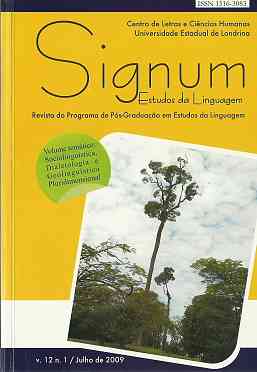The behavior of Romanic languages regarding the null subject parameter
DOI:
https://doi.org/10.5433/2237-4876.2009v12n1p191Keywords:
Null subject parameter, Italian, Spanish.Abstract
Recent studies, bringing together the presuppositions from the Principles and Parameters Theory and from Sociolinguistics, have showed that Brazilian Portuguese (BP) is changing concerning Null Subject Parameter. To analyze this change, it is necessary to situate BP among other languages in order to know if its characteristics are really distant from the null subject languages. We examined the cultured speech of a variety of Italian and two varieties of Spanish. The results confirm our hypothesis that European Portuguese, Italian and Spanish share features that do not exist in BP anymore, or exist with low frequency, like covert subjects, despite having some peculiarities. These results confirm that a change is in progress in BP.
















